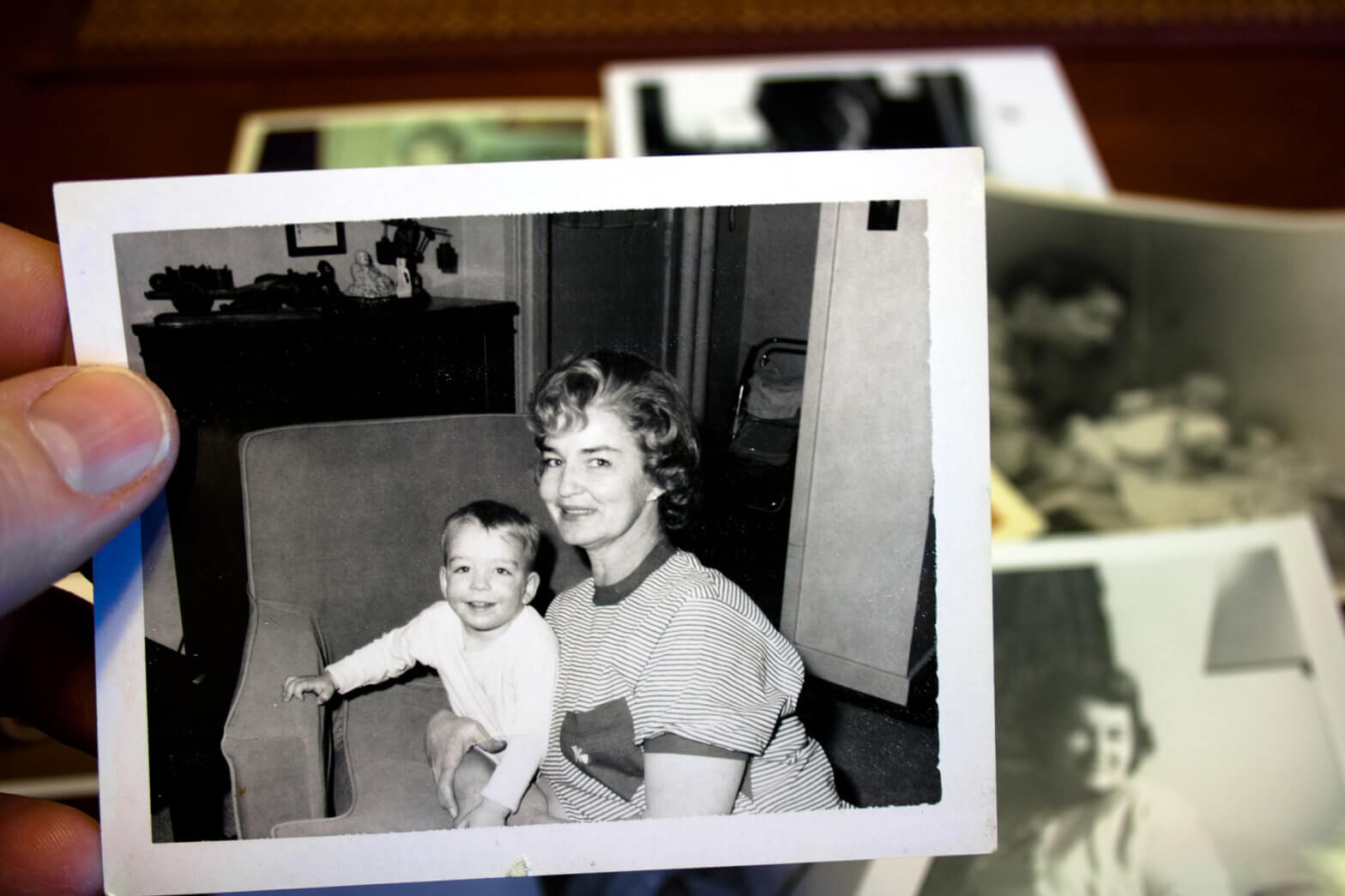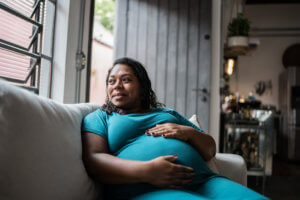Every day, adoption is adapting to the current cultural trends. This evolution wouldn’t be possible if not for the events and changes that have taken place throughout the history of adoption. Laws, processes, social views and more have all changed drastically over the years.
If you’re considering placing your child for adoption, you’ll need to understand exactly what modern adoption looks like — and, to better understand that, you’ll want to read about the history of adoption. This extensive guide has you covered.
Let’s get started.
Adoption History Timeline: When Did Modern Adoption History Begin?
Informal and formal adoptions have occurred for centuries, but prior to 1851, there were no adoption laws in the U.S. After the first law was implemented, the history of child adoption changed rapidly.
For this reason, there are two general eras of adoption history: before the 19th century and after the first adoption law was passed, better known as the “modern” age of adoption. Understanding the history of adoption gives us a better feel for where adoptions have been, where they are and the potential for where they may go.
Continue reading to learn more about the history of adoption and the beneficial changes that have occurred over time.
Adoption Before the 19th Century
Throughout the adoption history timeline of the 19th century, adoptions were what would be considered now as “closed adoptions.” Illegitimate pregnancies and adoptions were secretive and hidden.
“Open adoptions” and post-placement relationships between the birth parents and their child were essentially non-existent. Oftentimes, the adoptee would live their life without knowing they were adopted. Unmarried pregnant women would often be judged and even threatened into placing their children for adoption instead. Other women faced illness, personal crisis and financial woes that factored into their adoption decision.
Because there were no regulatory laws at this point in the history of adoption, protection for birth mothers and adoptees did not exist. Adoptions would often occur without consent, and children would sometimes be taken by adoptive parents who only wanted them for labor and profit purposes. Adopted children were then placed in families with other similar-looking children, which would raise fewer questions as the child grew up.
This dark era of adoption would continue into the 19th century, until the start of the “modern” age of adoption began.
“Modern” Age Adoptions
The history of adoptions changed drastically when the United States implemented the first adoption laws, the Adoption of Children Act, in Massachusetts in 1851. The law recognized adoption as a legal operation, which should be based on the welfare of the child, not the interest of adults.
With this law in place, the needs of the child were finally being made a top priority. Although adoptions would be forever changed for the better, the history of adoption in America still had a long way to go toward the modern adoption we know today.
Post-Placement Contact: A Brief History of Adoption
The History of Closed Adoption
While there are very few records of how many adoptions occurred throughout the last half of the 19th century, adoptions were still frequent. The majority of these adoptions remained closed, as negative misconceptions still tarnished societal views.
This adoption trend continued and led into what was known as the “Baby Scoop Era.” During this period, there was a large increase of unmarried women becoming pregnant. Although these women “voluntarily” chose adoption for their babies, due to the social pressures and pressures of family, many women later openly admitted to regretting their decisions. Adoptions were still predominantly closed.
By this point, statistics and records started being kept and adoptions were at an all-time high in the history of adoption in the United States. Approximately 175,000 adoptions took place in 1970, and 80%of these were arranged by agencies.
This increase in adoptions created the need for more organizations to not only assist with placing or adopting a child, but also to protect the children being adopted. Thus, began a push for the personal records and history of adoption to be made available to adopted children.
The History of Open Adoption
One of the first organizations to advocate for adoptees’ rights was the Bastard Nation. This group was formed in 1996 with the goal of pursuing adoptees’ rights to access previously sealed adoption records. These records would provide information on birth parents and help adoptees learn about their ancestry.
In 1998, just two years after Bastard Nation was formed, the first laws were passed to allow adult adoptees access to their original birth certificate — a way to determine their biological parents. This was a momentous step in the history of open adoption; it would lead to open adoptions becoming a legitimate option, with far less scrutiny and public judgment.
Although open adoptions were becoming more common, progress still needed to be made. A large problem? In most cases, open adoption was actually more similar to “semi-open adoption.”
Letters, pictures and other forms of updates were sent back and forth between the adoption agency and birth parents, but all identifying information was still kept secret. This made getting answers to questions about medical history and family background a challenge. Any sort of face-to-face meetings were very difficult and, in some cases, impossible.
Modern, fully-open adoptions did not begin to take off until the early to mid 2000s.
Today, for the most part, open adoption is encouraged and celebrated. Some form of openness is present in 95 percent of adoptions. Through calls, texts, emails or video calls, or even in-person meetings, adoptive parents and birth parents can have lifelong relationships with each other — and, most importantly, the adopted child.
Nontraditional Adoption History
During the early history of adoption in the world, nontraditional adoptions were very rare However, special circumstances adoptions did occur, and ethical improvements in the process would take decades to make.
History of Transracial Adoption
Early in the history of adoption, most organizations and agencies promoted “race-matching” with adoptive families. The first recorded transracial adoption occurred in 1948, when white parents adopted a Black child. Although there were other interracial adoptions previously, this would be the documented start of so-called “interracial” adoption history.
The debate over the pros and cons of domestic transracial adoption continues today. In fact, the Child Welfare League of America recommends only same-race placement in domestic adoptions.
Native American adoptions were also included in this sensitive debate.
The Indian Adoption Project was an influential movement in the history of adoption. Starting in 1958, this program placed Native children with white families. The unspoken goal was to “Americanize” the children involved in the adoption. Native American activists criticized the placements, arguing there was not enough cultural education for Native American children being adopted into white homes.
In 1978, Congress passed the Indian Child Welfare Act, which protects Native American tribes’ influence over adoption of Native American children. This act marks an important point in not only the history of nontraditional adoptions, but also the history of Native American adoptions — giving power back to the sovereign tribes that live within the U.S.
While racial awareness and understanding has advanced in the United States, more education and information is needed to eliminate prejudices that transracial adoptions still face. The more common they become, the more socially accepted and appreciated they will be as the history of adoption progresses.
Special Needs Adoption History
Special needs adoptions prior to the 1960s, were viewed negatively and, in many cases, were often decided against.
Traditional views surrounding special needs adoptions assumed that only white, healthy children should be available for adoption. Agencies would guide adoptive parents toward healthier children, assuming they would only want children that would measure up to their own intelligence, background, appearance and behavior.
By the 1960s, the need for organizations and resources to help advance special needs placements was evident. The title of “special needs” was expanded not just to disabilities, but also to children of a different race or part of a sibling group. In turn, specific agencies were founded to help these children find homes.
The increase of educational resources and overall awareness of the need for diversity has made special needs adoption more acceptable and common today.
The History of LGBT Adoption
LGBT adoption history in the U.S. (and around the world) is a work in progress. It’s fairly new, evolving more and more as regulations are passed.
The history of same-sex adoption coincides with the ever-changing history of LGBT civil rights. While LGBTQ parents were able to have children via reproductive technologies, for years it was illegal for LGBTQ applicants to adopt.
When same-sex marriages were legalized in 2015, this acted as a stepping stone for advancements in same-sex adoptions. Obergefell v. Hodges allowing same-sex couple to marry across the U.S., turned the page on previous restrictions and made it possible for LGBTQ parents to adopt as a married couple.
Unfortunately, this case did not eliminate the discrimination LGBTQ individuals face on a daily basis, nor while adopting. Many states still continue to pass anti-LGBTQ-adoption bills, while many others protect the rights of LGBTQ adoptive parents.
Because the history of LGBTQ adoption rights is fairly new, there is still much progress to be made — but the trend appears to be positive for those who are hoping to begin or add to their family through adoption.
History of International Adoption
Did you know that World War II helped shaped the history of international adoption?
Prior to the war, international adoptions were essentially non-existent. After the war, many foreign children of American soldiers were abandoned by their mothers. These children became of great interest to many American families, and international adoptions began.
However, they were not always safe. In many situations, adoptive parents would not even visit the child’s native country. Instead, the child would be shipped to the United States with little to no warning.
Child welfare professionals criticized the practices, seeking an increase in international regulation Finally, in 1993, The Hague Convention on the Protection of Children was formed to ensure international adoptions were completed safely and ethically. The regulations provided protection for the adopted child, birth parents and adoptive families.
This law, which is still intact today, marked a turning point in the history of international adoption. Currently, if you decide to adopt from a Hague-associated country, odds are you will need to abide to the Convention process.
Although these adoption laws have made international adoptions safer, strict regulations are partially to blame for its continual decline, which has been evident in the recent history of international adoptions.
Adoption Today
The modern process, societal views and overall impact of adoption are constantly evolving. The history of adoption has drastically in the last 100 years and will continue to do so. Today, as they were decades ago, adoption is a life-changing option for everyone involved in the process.
Challenges still remain for the public perception of adoption. But, as the different types of adoption become more celebrated, educating the public will become easier and more understood — in turn, shaping the future of adoptions.


![Important Adoption Definitions You Should Know [Complete Guide] Important Adoption Definitions You Should Know [Complete Guide]](https://adoption-for-my-baby.com/wp-content/uploads/2020/11/Definitions-300x169.jpg)






